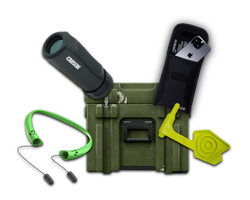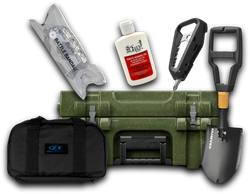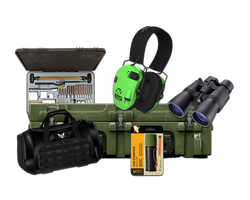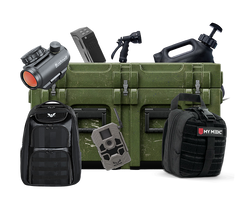How Much Do Sleeping Bags Weigh? A Comprehensive Guide to Choosing the Right Sleeping Bag for Your Adventure
Table of Contents
Introduction
Imagine this: after a long day of hiking through rugged terrain, you finally reach your campsite. As the sun sets and the stars twinkle overhead, you slip into your sleeping bag, ready to recharge for another day of adventure. But before you make that choice, there’s an essential question to ponder: how much do sleeping bags weigh?
This seemingly simple question is vital for anyone looking to backpack, camp, or simply enjoy the great outdoors. The weight of your sleeping bag can significantly impact your overall pack weight, comfort, and even your enjoyment of the journey. Whether you're a seasoned hiker or a newcomer to the outdoor scene, understanding sleeping bag weights and their implications is crucial for effective packing and planning.
In this blog post, we will explore the various factors that contribute to sleeping bag weight, including insulation types, design features, and temperature ratings. We'll also discuss the differences between ultralight and traditional sleeping bags, and how to choose the best option based on your personal needs and the conditions you will face. By the end of this article, you will have a comprehensive understanding of sleeping bag weights and how to select the right sleeping bag for your adventures.
Setting Expectations
This article will provide an in-depth overview of sleeping bag weights, offering insights that go beyond basic knowledge. We will cover:
- The factors influencing sleeping bag weight.
- Different types of insulation and their respective weights.
- How to choose the right sleeping bag for your needs.
- Common misconceptions about sleeping bag weights.
- Real-world examples and scenarios to illustrate key points.
Let’s dive into the world of sleeping bags and discover how much they truly weigh, along with the tactical considerations for choosing the right one.
Understanding Sleeping Bag Weight
The Importance of Weight
When it comes to outdoor gear, weight matters. For hikers and backpackers, every ounce counts. A lighter pack means you can travel further and more comfortably. Sleeping bags can range widely in weight, from ultralight models that weigh less than a pound to heavier, more insulated ones that can weigh several pounds. Understanding the weight of sleeping bags is essential for effective trip planning and comfort on the trail.
Factors Influencing Sleeping Bag Weight
Several factors determine the weight of a sleeping bag:
-
Insulation Type: The primary contributor to a sleeping bag's weight is its insulation. Sleeping bags typically use either down or synthetic materials, each with its own weight characteristics.
- Down Insulation: Known for its excellent warmth-to-weight ratio, down insulation is lighter and compresses better than synthetic materials. However, high-quality down (700 fill power and above) can be pricey. A typical down sleeping bag might weigh between 1 to 3 pounds.
- Synthetic Insulation: Generally heavier than down, synthetic insulation performs well when wet, is less expensive, and is easier to clean. A synthetic sleeping bag might weigh between 2 to 5 pounds.
-
Bag Shape: The shape of the sleeping bag also affects its weight. Mummy bags, which taper at the feet, tend to weigh less due to their design, while rectangular bags offer more room but are heavier.
-
Temperature Rating: Sleeping bags are rated for different temperature ranges, which can impact their weight. Bags designed for colder temperatures often have more insulation, making them heavier. Conversely, summer bags are typically lighter as they have less insulation.
-
Materials: The outer shell and lining materials also contribute to the overall weight. Lightweight, water-resistant fabrics can help reduce weight without sacrificing durability.
-
Features: Additional features such as zippers, hoods, draft collars, and pockets can add weight. Ultralight models often forgo these features to save on weight.
Weight Categories
Understanding the categories of sleeping bags based on weight can help you make informed decisions:
-
Ultralight Sleeping Bags: These typically weigh less than 2 pounds and are ideal for backpackers who prioritize weight savings. They are often made with high-quality down and minimal material.
-
Lightweight Sleeping Bags: Generally weighing between 2 to 3.5 pounds, these bags offer a balance between comfort and weight. They may include additional features for added comfort without significantly increasing weight.
-
Standard Sleeping Bags: Weighing over 3.5 pounds, these bags offer more insulation and comfort but may not be suited for long treks where weight is a concern.
Real-World Examples
To give you a better understanding of what to expect from various sleeping bags, here are a few examples:
-
Therm-a-Rest Hyperion 20°F: Weighs approximately 1 lb. 4 oz. Known for its lightweight design and high-quality 900-fill goose down insulation, this bag is suitable for three-season use.
-
Big Agnes Torchlight UL 20°F: Weighs around 2 lbs. 2 oz. This bag features a unique design allowing for extra room, making it versatile for different conditions.
-
Mountain Hardwear Bishop Pass 30°F: This sleeping bag weighs about 1 lb. 13 oz. and is a great budget option with synthetic insulation, offering good performance without breaking the bank.
Choosing the Right Sleeping Bag
Assessing Your Needs
When selecting a sleeping bag, consider the following factors:
-
Type of Camping: Are you car camping, backpacking, or winter camping? For car camping, weight may be less of a concern, allowing for a more spacious, comfortable sleeping bag. If you're backpacking, opt for a lighter model.
-
Weather Conditions: What temperatures will you encounter? If you expect cold weather, prioritize insulation and warmth over weight. Conversely, if you’ll be in warmer climates, a lighter summer bag will suffice.
-
Personal Comfort: Consider your sleeping habits and preferences. Side sleepers may prefer a roomier bag, while back sleepers may find a mummy bag more suitable.
-
Budget: Quality sleeping bags can vary in price. Determine your budget and look for models that provide the best value for your needs.
Testing and Trying Out Bags
Before making a purchase, if possible, test out sleeping bags. Many outdoor retailers have display models. Crawl into different bags to assess comfort, fit, and features. Pay attention to how the bag feels when zipped up and whether it provides adequate warmth.
Common Misconceptions About Sleeping Bag Weights
-
Heavier is Always Warmer: Not necessarily. While more insulation can mean more warmth, a well-constructed ultralight sleeping bag can provide just as much warmth as a heavier counterpart, thanks to better materials and design.
-
More Features Means More Comfort: While features such as hoods and draft collars can enhance comfort, they also add weight. Sometimes, less is more, particularly for ultralight backpackers.
-
Temperature Ratings Are Absolute: Temperature ratings are guidelines and can vary based on individual comfort levels, sleeping pad insulation, and clothing worn inside the bag. Always consider your own comfort and sleeping habits when choosing a bag.
Conclusion
Understanding how much sleeping bags weigh and the factors that influence their weight is key to choosing the right sleeping bag for your adventures. Whether you’re embarking on a weekend getaway or a multi-day trek through the wilderness, the right sleeping bag can significantly enhance your experience.
By considering insulation types, bag shapes, temperature ratings, and personal needs, you can find a sleeping bag that suits your style and ensures a comfortable night’s sleep. Remember, an informed choice leads to better adventures.
Call to Action
Before you head out on your next camping adventure, consider exploring Crate Club's subscription services for curated tactical gear, including top-quality sleeping bags and other essential camping equipment. Not only will you receive expert-selected gear, but you’ll also become part of a community of tactical enthusiasts. Check out the Crate Club Subscription Services and browse the Crate Club Shop for your next camping gear upgrade.
FAQ
Q: How much should I expect to pay for a good sleeping bag?
A: Prices can range widely depending on the type and quality of the sleeping bag. Expect to pay anywhere from $50 for budget models to several hundred dollars for high-quality options.
Q: What is the best insulation type for a sleeping bag?
A: Down insulation is generally considered superior for warmth-to-weight ratio, but synthetic insulation is better for wet conditions and is usually less expensive.
Q: How do I maintain my sleeping bag?
A: Follow the care instructions provided by the manufacturer, typically including washing with specific detergents and storing it in a loose, breathable bag to maintain loft.
Q: Can I use a sleeping bag year-round?
A: Yes, but you'll need to choose a bag with a versatile temperature rating or use a layering system to accommodate varying conditions.
Q: What is the best sleeping bag for backpacking?
A: An ultralight sleeping bag with a weight of less than 2 pounds and a suitable temperature rating for your planned conditions is ideal for backpacking.
By understanding the weight and features of sleeping bags, you're better equipped to make informed decisions and elevate your outdoor experiences. Happy camping!
Share this article



